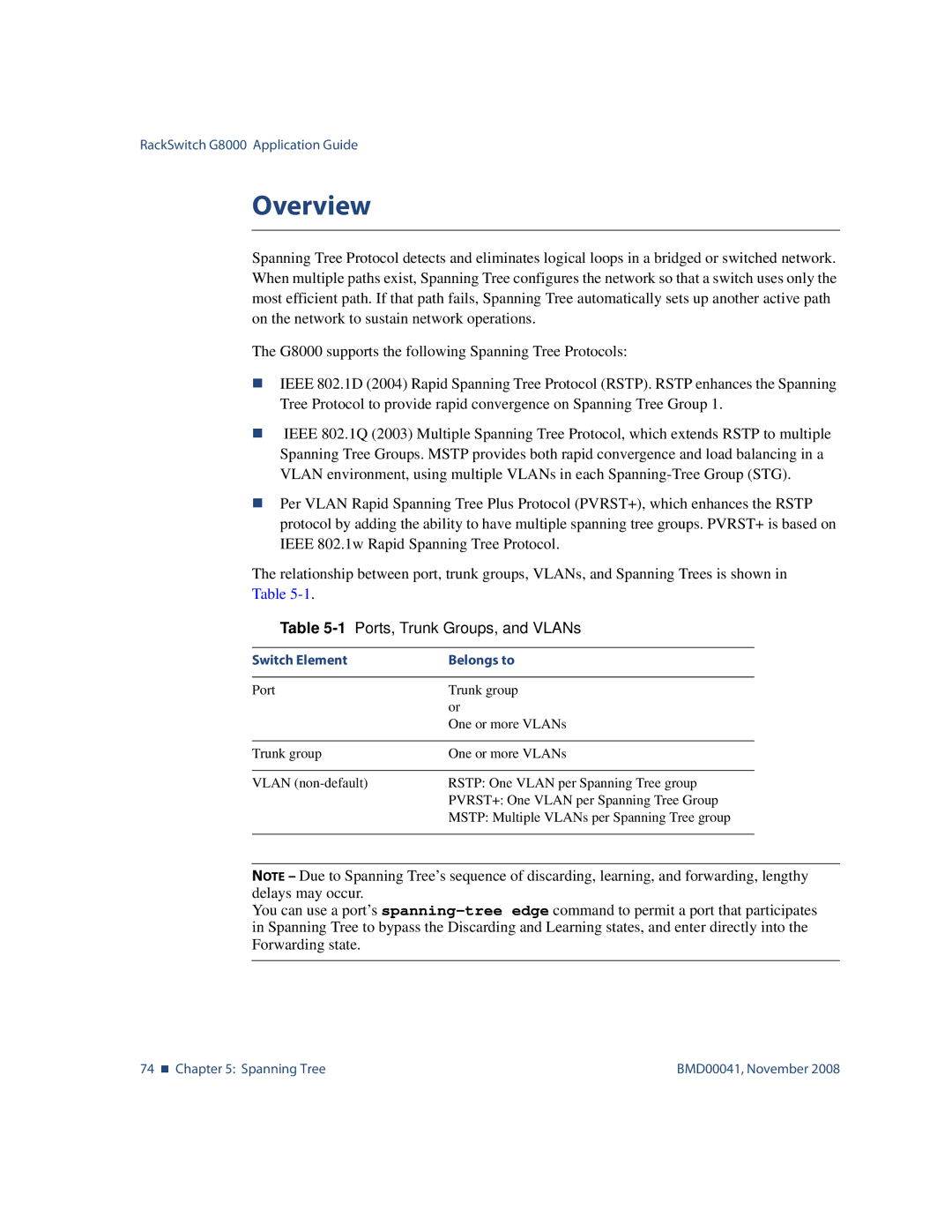
RackSwitch G8000 Application Guide
Overview
Spanning Tree Protocol detects and eliminates logical loops in a bridged or switched network. When multiple paths exist, Spanning Tree configures the network so that a switch uses only the most efficient path. If that path fails, Spanning Tree automatically sets up another active path on the network to sustain network operations.
The G8000 supports the following Spanning Tree Protocols:
IEEE 802.1D (2004) Rapid Spanning Tree Protocol (RSTP). RSTP enhances the Spanning Tree Protocol to provide rapid convergence on Spanning Tree Group 1.
IEEE 802.1Q (2003) Multiple Spanning Tree Protocol, which extends RSTP to multiple Spanning Tree Groups. MSTP provides both rapid convergence and load balancing in a VLAN environment, using multiple VLANs in each
Per VLAN Rapid Spanning Tree Plus Protocol (PVRST+), which enhances the RSTP protocol by adding the ability to have multiple spanning tree groups. PVRST+ is based on IEEE 802.1w Rapid Spanning Tree Protocol.
The relationship between port, trunk groups, VLANs, and Spanning Trees is shown in Table
Table 5-1 Ports, Trunk Groups, and VLANs
Switch Element | Belongs to |
|
|
Port | Trunk group |
| or |
| One or more VLANs |
|
|
Trunk group | One or more VLANs |
|
|
VLAN | RSTP: One VLAN per Spanning Tree group |
| PVRST+: One VLAN per Spanning Tree Group |
| MSTP: Multiple VLANs per Spanning Tree group |
|
|
NOTE – Due to Spanning Tree’s sequence of discarding, learning, and forwarding, lengthy delays may occur.
You can use a port’s
74 Chapter 5: Spanning Tree | BMD00041, November 2008 |
